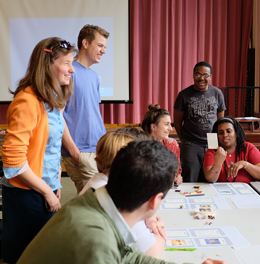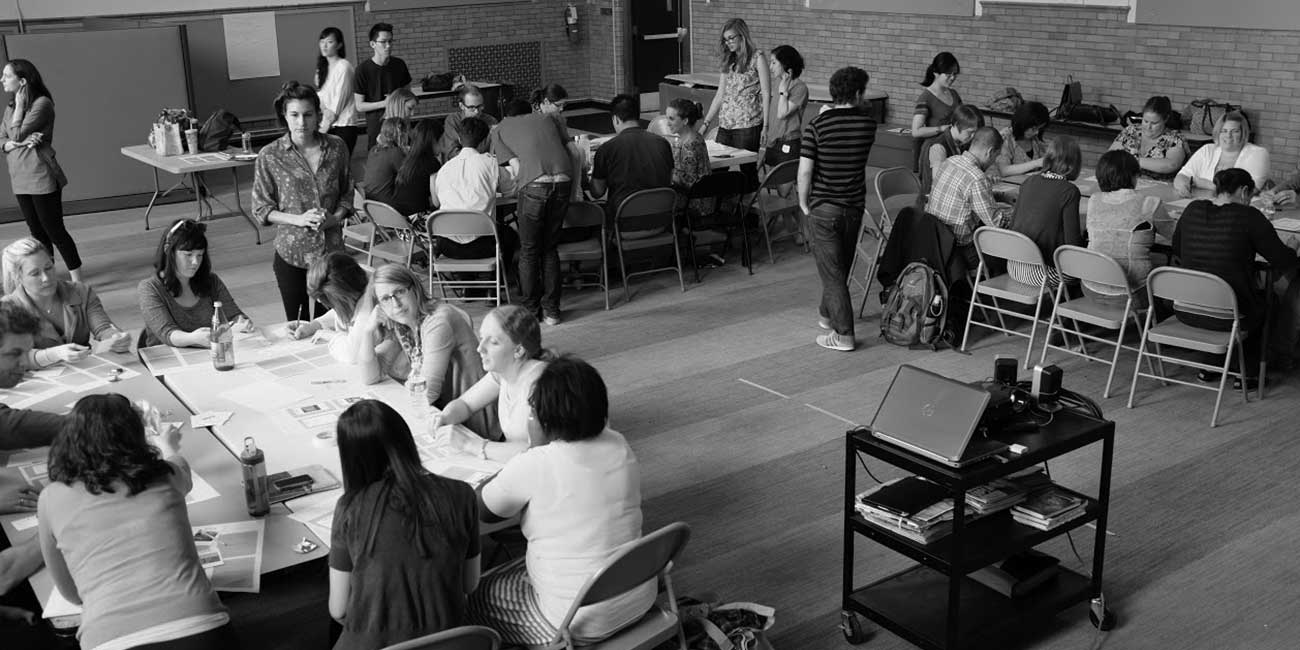The Environmental Charter School
evolveEA has cultivated an ongoing relationship with The Environmental Charter School at Frick Park (ECS) to help them further their mission of fostering knowledge, love of and respect for the environment and the will to preserve it for future generations. We have helped ECS connect its mission and its environment through engagements with the school and with architecture students at Carnegie Mellon University.
Lower School: Thinking Lab
We helped ECS develop their idea for a new classroom space called the Thinking Lab, an interactive, cross-disciplinary learning environment. Christine Mondor initiated a project with students in her Spring 2012 Human Factors in Architecture class at Carnegie Mellon University to contribute innovative ideas for settings, furniture and systems for the new space. The students used human-centered design to inform their own prototype designs for the Thinking Lab that would fulfill the projects goals of promoting rich sensory experiences, and helping young students develop verbal, visual, and critical thinking skills necessary in navigating a 21st century world.
Upper School: Big Changes+Small Changes
evolveEA has helped ECS plan for large-scale infrastructural changes to its Upper School building, while also supporting efforts to enable teachers to make better use of existing spaces on a small scale.
evolveEA assisted Rothschild Doyno Collaborative with sustainability goal setting and mission alignment to their much needed Upper School renovation planning. We helped them consider how ECS’s spaces could facilitate these goals:
- Better Learning Settings
- Improve Building Performance
- Demonstrate Sustainability Principles
- Establish a Culture of Sustainability
 Parallel to our work with the renovation team, Christine Mondor led a team of Human Factors in Architecture students from the Spring 2013 class to help ECS explore how their school environment could serve as a Third Teacher. The concept of environments acting as a Third Teacher for children (after adults and peers), was pioneered in the 1940’s by psychologist Loris Malaguzzi and has since been adopted as an interdisciplinary movement of designers, educators, scientists and others (see TheThirdTeacher.com). The students visited learning environments in different Pittsburgh schools to inform their approach to integrating this concept throughout the ECS Upper School. Next they engaged ECS faculty in charrettes to help them better understand how they use their space. The students created toolkits for the teachers to use in sparking creativity in how they can effectively use their spaces.
Parallel to our work with the renovation team, Christine Mondor led a team of Human Factors in Architecture students from the Spring 2013 class to help ECS explore how their school environment could serve as a Third Teacher. The concept of environments acting as a Third Teacher for children (after adults and peers), was pioneered in the 1940’s by psychologist Loris Malaguzzi and has since been adopted as an interdisciplinary movement of designers, educators, scientists and others (see TheThirdTeacher.com). The students visited learning environments in different Pittsburgh schools to inform their approach to integrating this concept throughout the ECS Upper School. Next they engaged ECS faculty in charrettes to help them better understand how they use their space. The students created toolkits for the teachers to use in sparking creativity in how they can effectively use their spaces.


